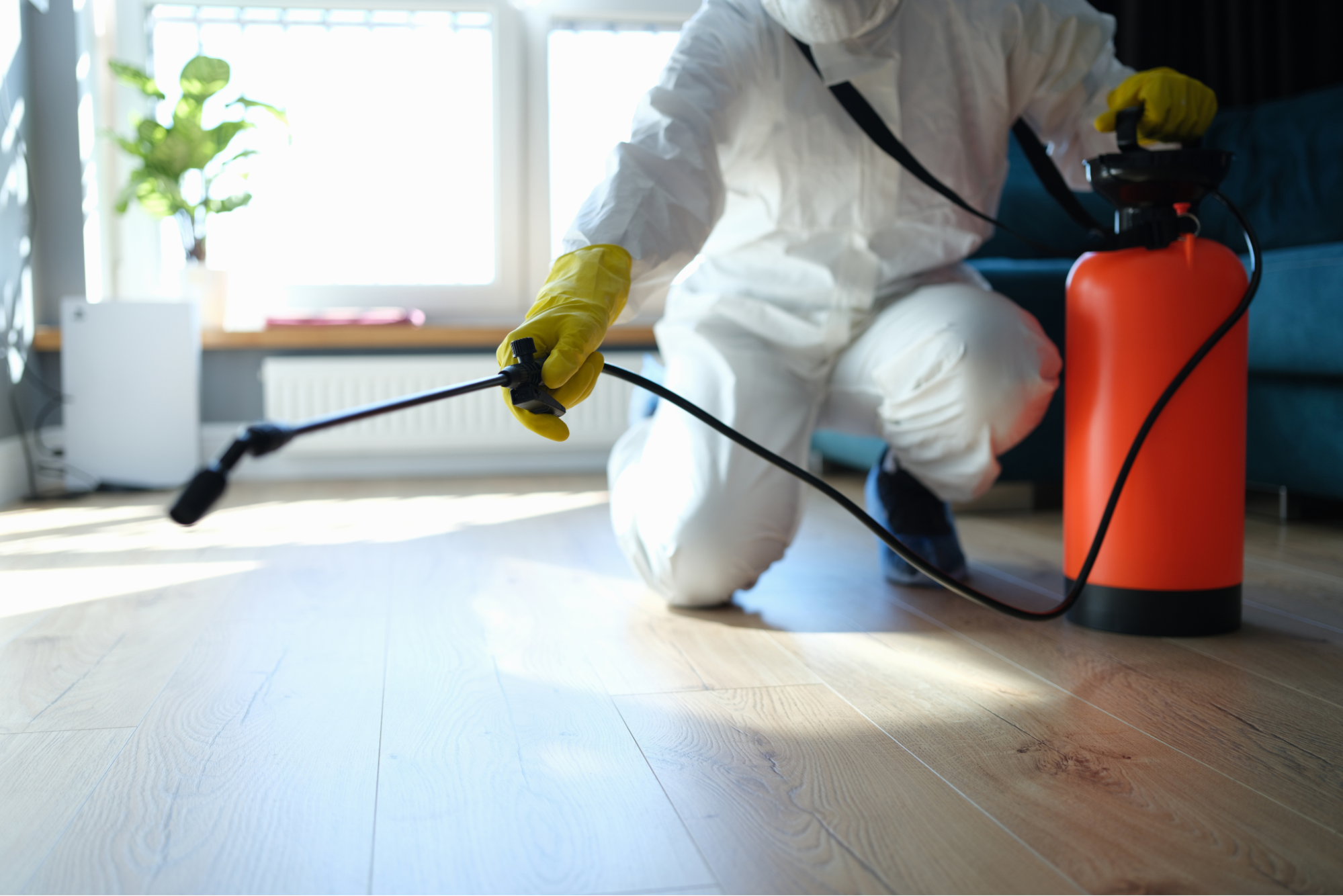Bed Insect Therapy Breakdown: Comparing Chemical Vs. Non-Chemical Solutions
In the realm of insect control, particularly when managing the consistent concern of bed bugs, the choice in between chemical and non-chemical therapy options can be an essential one. Both techniques offer unique advantages and disadvantages, affecting variables such as effectiveness, safety and security considerations, and overall cost. By taking a look at the nuanced details of each approach, a clearer understanding of which course to go after in resolving a bed pest infestation can be acquired.
Efficiency of Chemical Therapies
Chemical treatments for bed pest problems have actually been commonly identified for their potent and quick efficiency in eliminating these pests. When considering the efficiency of chemical therapies, it is vital to comprehend that they can provide a complete and fast solution to a bed insect issue.
In addition, chemical treatments have the advantage of supplying residual effects, indicating that they can remain to eliminate bed pests even after the initial application. This residual action is particularly useful in combating any kind of potential re-infestations. Furthermore, the fast action of chemical treatments can bring alleviation to people dealing with extreme bed bug problems, allowing them to gain back control of their space swiftly.
Security Interest In Chemical Solutions
One crucial element that requires careful factor to consider when using chemical solutions for bed insect treatment is guaranteeing the safety of occupants and the atmosphere. Direct exposure to certain chemicals used in bed insect treatments can lead to respiratory problems, skin irritation, or various other damaging responses, specifically in people with pre-existing conditions or level of sensitivities.
Additionally, the environmental influence of chemical remedies is one more considerable factor to consider. Some pesticides made use of in bed bug therapies might be hazardous to helpful pests, wildlife, and ecological communities if they seep into the dirt or water systems. It is necessary to use chemical therapies carefully, adhering to safety and security standards, and taking into consideration less poisonous alternatives to mitigate these dangers and guarantee the reliable and secure monitoring of bed pest infestations.
Benefits of Non-Chemical Techniques
Taking into consideration the possible safety problems and environmental impact linked with chemical remedies for bed pest treatment, checking out non-chemical methods offers an appealing option with a number of unique advantages. Non-chemical techniques provide a more secure alternative for homes, particularly those with pets, youngsters, or people delicate to harsh chemicals. These approaches eliminate the risks of exposure to toxic substances, lowering the possibility for unfavorable health impacts. In addition, non-chemical treatments are eco-friendly, as they do not add to air or water pollution, making them a lasting option for parasite control.
Additionally, non-chemical options can be effective in targeting bed pests, consisting of hard-to-reach locations where chemical therapies may not pass through. Approaches such as warm treatment, vacuuming, steam cleansing, and bed mattress encasements provide comprehensive elimination without making use of harmful chemicals. Furthermore, non-chemical strategies can be much less disruptive, calling visit their website for very little prep work and permitting quicker reentry right into treated locations. Generally, choosing find out for non-chemical bed bug therapy methods not only focuses on safety and ecological defense however additionally makes certain effective and comprehensive bug control.
Limitations of Non-Chemical Treatments

In addition, non-chemical therapies often require several applications to accomplish successful elimination. This can be taxing and might not constantly assure complete removal of all bed insects and their eggs, specifically in hard-to-reach or hidden places.
Moreover, the success of non-chemical treatments heavily depends on proper execution and thoroughness, which can be challenging for individuals without expert know-how. Inadequate application of non-chemical techniques might result in insufficient obliteration, leading to persistent invasions and the demand for additional treatments.
For that reason, while non-chemical treatments have their advantages, it is essential to acknowledge these constraints and consider them when establishing one of the most effective method for managing bed pest infestations.
Cost Contrast: Chemical Vs. Non-Chemical Options
Offered the constraints associated with non-chemical therapies, a vital aspect to evaluate in the context of bed bug management is the expense contrast in between chemical and non-chemical choices. In comparison, non-chemical treatments like warmth therapy or vapor can be a lot more expensive, with expenses varying from $1,000 to $6,000 for an entire home. While the first expense of chemical treatments may appear lower, several therapies may be required to completely get rid of the invasion, possibly increasing the general price.
Final Thought

Considering the prospective safety and security concerns and environmental effect connected with chemical options for bed pest treatment, discovering non-chemical approaches provides an appealing alternative with numerous unique advantages.Provided the constraints associated with non-chemical treatments, an essential facet to assess in the context of bed insect management is the cost comparison between chemical and non-chemical alternatives. In contrast, non-chemical treatments like warm treatment or heavy steam can be extra pricey, with expenses varying from $1,000 to $6,000 for a whole home. While the first cost of chemical treatments might seem lower, multiple therapies may be needed to fully remove the invasion, potentially increasing the overall price.In final thought, when contrasting chemical and non-chemical bed insect treatment choices, it is necessary to consider efficiency, safety, advantages, limitations, and expense.
Comments on “High Quality A1 Pest Control Services Charlotte - Shield Your Home”